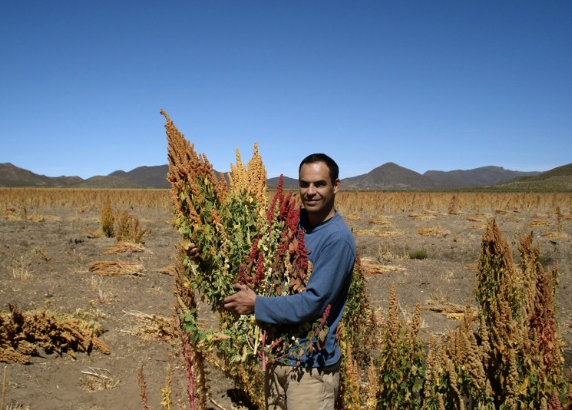Dear friends,
It gives me great pleasure to be here with you in Budapest at this
National Tripartite Seminar on Youth Employment. I cannot think of a
more important subject to start the year than youth employment, which we
are addressing here.
Five years after the onset of the global
and financial crisis, the high and persistent levels of youth
unemployment in Europe, the increasing difficulties that young women and
men face every day to access a stable and decent job months and years
after leaving school, are matters of serious concern and they risk
leaving long-lasting scars on the very fabric of our societies.
I do not think that statistics reveal the social and human drama behind these numbers.
Our latest data show that the global crisis impact on labour markets is
taking a bigger toll on young women and men than any other group. There
are nearly 75 million unemployed youth aged 15 to 24 in 2012 worldwide
and there are approximately 5.5 million unemployed youth in Europe and
the average unemployment rate of youth is above 22 per cent. This is
more than double the unemployment rate of adults. More worrying is the
increase in long-term unemployment among young people in the EU as a
consequence of the global economic crisis. Youth now represent 30 per
cent of the long-term unemployed in Europe – those who have been seeking
work for more than 12 months. Before the crisis, this phenomenon
affected mainly adults.
If you are unemployed in the first
year of your career, it affects your entire life, it affects your
health. We have to look at the quality of jobs. Young people are the
most vulnerable; they are five times more likely to be in temporary and
part-time employment compared to adult workers in European Union
countries.
Clearly, countries with highly segmented labour
markets are weathering the crisis with greater difficulty, and we are
witness to increasing vulnerability of youth to unemployment and
poverty.
Some 14 million young people, more than 15 per cent
of European youth aged between 15 and 29, are estimated to be in this
infamous new category called “NEET”, those neither in employment nor in
education or training, those who have not found a job or have even given
up looking for a job altogether and lost interest in improving their
skills. It is shocking that the incidence of NEET has almost doubled in
only two years.
We cannot and should not let that happen before our very eyes.
It is time for action, for immediate and targeted action, as called for
by the ILO’s global tripartite constituency at our last International
Labour Conference in June 2012.
The
2012 ILO Call for Action
came up as a very strong call to policy makers to respond to the
unprecedented youth employment crisis. It is also accompanied by a
policy portfolio of possible and tested measures from around the world,
that were debated and evaluated long and hard during the Conference
discussions.
The
2012 ILO Call for Action
recognizes that there is not one single solution, no
“one-size-fits-all” approach that is applicable to every country. What
works in Hungary might not work in other countries. Second, we need a
“multi-pronged strategy” that is based on pro-employment macroeconomic
policies.
We also need to pay attention to skills development
youth entrepreneurship and labour rights that can help young people in
their transitions to decent work, including and especially in times of
crisis. We need active labour market policies targeted to young people.
We need to be attentive to the right of young workers. Since taking
office, I have assigned the highest priority to youth employment and to
ILO support to our constituents in this area.
It is imperative
that appropriate anti-crisis measures are put in place to prevent young
people from disconnecting from the labour market for long periods. We
need to enable them to catch-up on their skills’ deficit, especially for
the low-skilled and disadvantaged youth, and we need to support their
employment through temporary subsidies.
These measures should
be for a period of not less than one year; shorter periods will
perpetuate the precarious and volatile nature of youth employment. It is
also imperative that young workers’ rights are respected and upheld and
discriminatory practices are prevented because of their higher
vulnerability and limited experience.
For countries undergoing
austerity measures, these are not easy issues. It is important that
labour market measures addressing youth are ring-fenced from budgetary
cuts and investments on these programmes are increased. We need to see
these as investments, and these investments will pay off in a long term.
Investing in these measures is far less costly than dealing with the
consequences through unemployment benefits, anti-social behaviour or a
more permanent disconnect from the labour market.
This is why I welcome and support the new package of measures proposed by the European Commission last December in Brussels.
I have extended ILO support and have agreed with Commissioner Andor to
fully cooperate in the implementation and evaluation of the
effectiveness of different measures and schemes promoting youth
employment at the European level.
I want to highlight that we
are also supporting the bipartite negotiations between European
employers’ and workers organizations for a framework action plan on
youth employment. Let me congratulate the Ministry for National Economy
of Hungary for the new programmes they are introducing as we heard this
morning. The Hungarian National Youth Strategy 2009-2024 recognizes the
challenges that young Hungarians face in the labour market, and
highlights priority target groups for action, including early school
leavers, those with educational and skills deficits, young women with
children and the high proportion of youth in unregistered employment. It
also points to potential areas for focusing attention, the structural
reforms in vocational training and entrepreneurship development.
Inevitably, the challenge for such a wide-ranging strategy lies in its
implementation.
The
2012 ILO Call for Action on youth employment
also calls for renewed and reinforced social dialogue to confront youth
employment. Tripartite action is the key to establishing the enabling
environment for the successful implementation of labour market policies
for young people. Governments, employers’ and workers’ organizations all
have their part to play, both through fulfilling their own specific
mandates and through concerted, joint efforts. Today is the time to
strengthen social dialogue, not to weaken it.
Today’s
Conference is an opportunity to measure progress in Hungary and to
review good practices from Europe and other country experiences that
could inspire further action. Let me mention a few concrete ideas.
Apprenticeships, skills training and work-training programmes, such as
the dual apprenticeship system, can improve young people’s chances of
finding a job; the combination of skills development with work
experience. These are major lessons of international experience that
have proven effective also during the recent crisis. The ILO review of
apprenticeships recently considered by the G20 Task force on Youth
Employment showed that apprenticeships for low-skilled youth can reduce
labour costs for low-productive and inexperienced workers and improve
their longer term employability.
Government interventions in
the form of wage subsidies, and other incentives such as tax or social
security exemptions for a limited period for private sector employers
who hire young people, can help raise labour demand during economic
downturns. Evaluations show that time-bound and well designed,
well-targeted subsidies can have a positive employment impact,
especially when combined with training and work experience.
Promoting entrepreneurship, social enterprises and cooperatives can
provide options for young people including during times of crisis if the
current credit crunch and access to finance for SMEs and social
enterprises can be overcome. This is one way to move forward.
Public Employment Programmes, especially in disadvantaged regions and
communities, are widely being implemented as a last resort.
These all are areas with a large growth potential in Hungary and in other countries as well.
Our assessment shows that single measures are, however, likely to have a
limited impact in the short-term - targeted packages of measures are
more effective.Youth guarantee schemes are an example of packages of
labour market measures and part of the EC proposal announced by
Commissioner Andor a month ago .
The ILO has also contributed
considerable preparatory work in this respect. Our assessment shows that
youth guarantee schemes are more effective when they provide universal
access to training or employment for a well-defined target group of
unemployed or low-skilled. Well-designed programmes, with
well-functioning delivery systems through employment services and local
authorities, and targeted to low-skilled and disadvantaged groups, show
good results including in the medium-term.
I am often asked
but how much would these measures cost? And can we afford them? I am
often tempted to reply by asking another question: What is the cost of
inactivity, allowing long-term unemployment to grow and NEETs to finally
disconnect from the labour markets and ultimately from society!! Can we
afford these costs? No, we cannot, as they sow the seeds of social
unrest and violence, destroying the hopes for social cohesion and
sustainable economic growth, and thus generate risks for the European
Social Model.
Let’s face it, these are much needed but
remedial options in the present context of low aggregate demand and
global slowdown. Our econometric research clearly shows the impact of
macroeconomic determinants on youth employment: the higher the
investment, the lower the youth unemployment rate, in both
industrialized and low- and middle-income economies.
Confronting the youth employment challenge is an immediate and urgent
responsibility – for governments, for employers’ organizations, for
workers’ organizations and for civil society actors focused on young
people. Successfully attacking the problem is not only a critical
economic, social and human necessity but it is also a test of what kind
of a society we are and want to be. The ILO believes that only through
joint tripartite action can this battle be won.
Thank you for your kind invitation. I wish you all every success in your endeavours.





